The purpose of the research project
The research is to analyze the academic paper based on how writers use text, data, and language by using Ant Cont. The tool is used to identify the style, strategies, and knowledge of authors based on vocabulary, phrases, and words which to learn about how the precise and accurate one academic article could be based on Antconc analysis in different factors. It is also to observe how the vocabulary shifts in different fields between 30 years of academic research in sustainability and construction. The purpose is to see how much academics have evolved from time to time. There are 4 research qustions in total.
- How many percent of academic words was used in each research article?
- How many words token from the articles?
- What were the top 5 most used words in all those articles?
- How many times did the Keywords that contain words construction, analysis, development, sustainability, and design in each article?
The method used in the corpus project will be focusing on analyzing the engineering articles. Analysis sustainability design, architecture design, and construction field related. There will be 8 texts, The different outcomes of the four texts (the 1990s), and the four articles( from 2010-2022). While doing research, some research papers could reach a maximum of 40 pages. That is the reason why some parts should be taken out to put in the corpus project.
The first main reason that the engineering type of articles is chosen is major-related, for future research benefit, choosing the engineering research types of articles to analyze on Antconc is helpful. Second, reading and knowledge, researching sustainability and building, will provide the opportunity to read and learn more about topics such as structure or planning in construction fields. Instead of analyse the In this analysis, a word list will be used to find the frequency of words, it’s helpful when it comes to comparing the words created by the references or academic words in each research article.Advanced search and Tool Preferences is to find the number of academic words and look at how it’s used in phrases with the tool size adjustment. Concordance Tool is to the words or phrase being used after and before a vocabulary to see more context. Cluster/N-Gram to scan the search words in the entire article. Collocates Tool to see the sequence pattern of words. The articles was anlaysed by converting to txt file.
The research procedure is to put on reliable academic sources such as Jstor, Onesearch Skillman Library, Google Scholar, these research mechanisms allow the research to be more accurate and targeted to the point of academic paper or peer review. It’s also helpful with the timeline for the research adjustment. All of the articles are in academic articles categories from all sources, the intention is to compare the differences between the research and evolution of knowledge of writers from time to time. There are 8 texts that were included specific to sustainability, Construction Development, Architecture, and Engineering related. That indicates clear improvement for both technology at work of Engineering and education horizontally. It’s important in Engineering that people write to communicate ideas and mechanisms to express their discovery. It will analyze how different it could be with different times, Engineering Academic research has to be strictly true with evidence and support. Scientific writing needs to contain proof, references, and fact checks. The quality is required which is like the methods for doing work, research, and real-life practices. It cannot be wrong or opinion stated. All the articles analysing of 8 discussed about about the sustainability and the better ideas and specific of the techniques and better design considering factors such as environments, sustainability and human living conditions. Main tools to be included in the study of the analysis are to include all the titles, subjects, and words counts, percentage words calculation.
In order to analyse the article, research questions should be answered, My first research question was “How many percent of academic words are used in each research article?” There is Articles from 1990s the AWL percentages are in order 11.73% , 7.57%, 11.01%, and 12.25%
Articles during 2010-2022 AWL percentages are 17.01% , 14.27%, 21.52%, and, 18.27%. Based on the expectation set of research and analysis is to find percentages of academic words used in articles minimum of 20%, it was analyzed in Antconc. However, for all 7 articles none of them have archevie to expectation. The 7th articles during 2010-2022 contain 21.52% beside that all others articles are under expectation. The contrait to the small percenatage of academic words could come from the Engineering research itself, while doing research articles that have been written contained graph, data or images which describes idea and reserach in articles. Engineering paper is a unique science because authors would use image and graphs a lot in their articles which sometimes could have the small or little writing description. My second research question is “What are the words token and the most used words?” there are 12904 token words for the articles from during 1990s in total of the 4 articles together. There are 29739 token words from the articles during 2010-2022. The expectation of the words token is the article during the 2010-2022 will be more than the articles during 1990s. The difference is the recent articles is twice more than the 1990s. However, Based on the words token it cannot say anything about how vocabulary, writing style or how the writing changes. However, the reason that the words taoken of recent articles more could be because of the differences of length of articles duing 2010-2022 is longer and contain more vocabularies. There is another research question that could determine how research question changes, the third research question is “What are the top 5 most used words in all those articles?”Top 5 most used words are from 1990s: The, Of, And, to Top 5 most used words are from 2010-2022: The 5 most used words are: The, Of, And, In, to
The most words used are similar but it is not surprising because these types of words always appear in articles. The third research question is “How many times do the Keywords that contain words construction, analysis, development, sustainability, and design in each article?”
The image from 1.1 to 1.4 shows the word’s usage of 4 articles from the 1990s

Image 1.1 indicated that the word urban in the first article contains 3 times, the second article contains 20 times, the third articles contain 35 times, and the fourth contains 20 times. Considering the amount of words appearing on the four articles and within the short length of each article. It is the reason for the 1st article have the smallest amount since the article is not about urbanization but about ecological Engineering which has little relation to the word urban
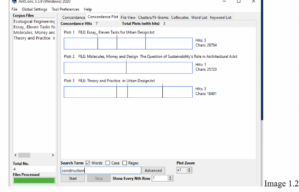
Image 1.2 indicated that the construction in first articles contain 3 time, second article contain only 1 time, third articles contain 3 times and fourth contain 0 times. It is the surprising how author in the fourth article didn’t used the words construction. Since it is about urbanization
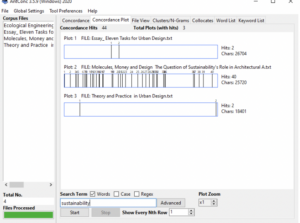
Image 1.3 indicated that the sustainability in the first article contains 2 times, the second article contains only 40 times, the third article contains 2 times and the fourth contain 0 times. After analyzing the four articles the errors have been noticed, It could have been more accurate the words analyzing include the words sustainability and sustainable since those two words should be used
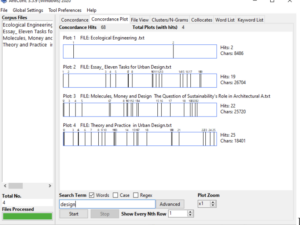
Image 1.4 indicated that the Design in the first articles contain 2 times, the second article contains 19 times, third articles contain 22 times and fourth contain 25 times.
The image from 2.1 to 2.4 shows the word usage of 4 articles from 2010-2022
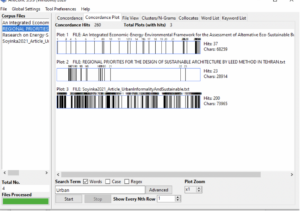
Image 2.1 indicated that the urban in the first article contains 37 times, the second article contains 23 times, the third article contains 200 times and the fourth contain 0 times.

Image 2.2 indicated that the construction in the first article contains 76 times, the second article contains 5 times, the third article contains 49 times and the fourth contains 2 times.

Image 2.3 indicated that the sustainability in the first article contains 6 times, the second article contains 17 times, the third article contains 3 times, and the fourth contains 52 times.
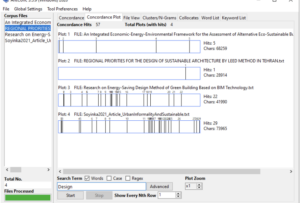
Image 2.4 indicated that the design in the first article contains 1 time, the second article contains 1 time, the third articles contain 22 times, and the fourth contains 2- times.
To sum up all the data, the information should be valid, during the research the articles should be recent and reliable to use in the Corpus project. The expectation of this research is the changes of knowledge and the words’ usage of the research article. There is the possibility of different new vocabulary changes almost 30 years ago. The new article’s text is also expected to have more references and use fewer first-person pronounces than the 4 old articles.
Judging through articles that were focused on design methods, tips, and techniques from the 1990s to 2022 articles were written by different authors who are engineers and Architects. It is broadly leading toward design and construction. While searching for articles for the Antconc project, There were some difficulties converting files from pdf to txt. The article itself doesn’t just contain thousands of academic words but also the graph and picture which could screw with the real words. For example, in txt the graph and picture are unrecognizable; they were converted to random codes between the text which made it challenging to run Antconc. All alphabets and numbers such as (a, b, c, 1, and 0…) were counted in the analysis of word frequency; it also appears in the word frequency which is not exactly the words. Those letters are involved in the word count which also messes up orders and rank of the real words. During the process, there needs to be a clean-up file and going through all articles to make sure that those codes don’t appear in the text. Some footnotes, pages, and references got removed from the text because it’s also messed with the order of the text.
Moreover, there was a slightly different way of how authors cite their sources and put their credit. For articles from the 1990s, four of the texts contain the consistency of putting all names, authors, institutes, publication dates, titles, and sources on the first beginning top of the pages. New articles during the time from 2010-2022 could be a bit vary based on authors’ style of writing and citing their references. There tend to be titles and authors’ names and then articles. References are often put aside until the end or in the footnotes of each page. In the meantime, the analysis tools. The academic words during the 1990s are still limited with the ranges of frequency using first-person pronounce “I” in the rank of 52 amounts the 4 articles. The old academic papers tend to be shorter and contain fewer academic words based on the analysis of the percentage. For example, the expectation of the words sustainability didn’t exist in the article name “the ecological Engineering” (Jay E.Anderson and William 1. Mitsch_Ecological Engineering_Annual Meeting, Snowbird, Utah, August 1995.). Moreover, There are different hits using concordances of each article, the difference between the 4 articles from the 1990s and 4 articles from 2010-2022 is there are more words. The common thing about authors’ writing is that the preposition remains the highest frequency used in the articles for both periods of time.
To summarize the study, The Engineering texts are content-based which heavily emphasize technical vocabulary, Knowledge, and the accuracy of the author. From time to time, authors develop, discover, and implement more ideas into practical applications. Based on the observation, mean that the academic has been making good progress and contribution to
Scientific field research. Since the first intention is to focus on how engineering research in the education system has developed throughout time. We can clearly see some differences and more technical terms are used. Academic words in the 4 articles from 2010-2022 are higher than the 4 articles from the 1990s; however, it’s still lower than expected. The expectation is about 20% but only one article could reach 21.31%. The error could occur due to improper file clean-up or the messy code from graphs or pictures while converting to txt.
The good expectation about this analysis is that the 4 recent articles focus more on sustainability, research, and development. It is not just better for academic word analysis but it means that engineering is starting to care more about sustainability research.
Reference: APA/MLA
The list of the articles of
- Jay E.Anderson and William 1. Mitsch_Ecological Engineering_Annual Meeting, Snowbird, Utah, August 1995.
- Michael Sorkin, Eleven Tasks for Urban DesignVol. 29 (1998), pp. 22-27, The MIT Press on behalf of Perspecta, 1998
- Mark Jarzombek_Molecules, Money and Design: The Question of Sustainability’s Role in Architectural_Academ-Thresholds, No. 18, design & money (1999), pp32-38, Massachusetts Institute ofTechnology_https://www.jstor.org/stable/43876032,1999,
- DAVID OWERS_Theory and Practice in Urban Design_Built Environment Vol. 22, No. 4, Theory and Practice in Urban_Design (1996), pp. 252-257, (1978-) , 1996,
- Maria Rosaria Guarini Francesco Sica_ Pierluigi Morano And Josè Antonio Vadalà_An Integrated Economic-Energy-Environmental Framework for the Assessment of Alternative Eco-Sustainable Building Designs_Urban secinces_2021
- Seyed Mohammad Yaser Mousavi Boora1 Mojtaba Karimnezhad2 _REGIONAL PRIORITIES FOR THE DESIGN OF SUSTAINABLE ARCHITECTURE BY LEED METHOD IN TEHRAN_International Journal of Ecosystems and Ecology Science (IJEES)_January 2021
- Xiao-guang Zhao1_Chun-Ping GaoResearch on Energy-Saving Design Method of Green Building Based on BIM Technology_Hindawi_4 February 2022
- Oluwole Soyinka1_Yusuf A. Adenle_Mohammed Abdul‐Rahman2_Urban informality and sustainable design of public space facilities: a case study of Hong Kong SAR of China in 2018_Environment, Development and Sustainability (2021)_1 April 2021
Analysis Sources:
https://cloudconvert.com/txt-converter
https://owl.purdue.edu/owl/research_and_citation/resources.html
